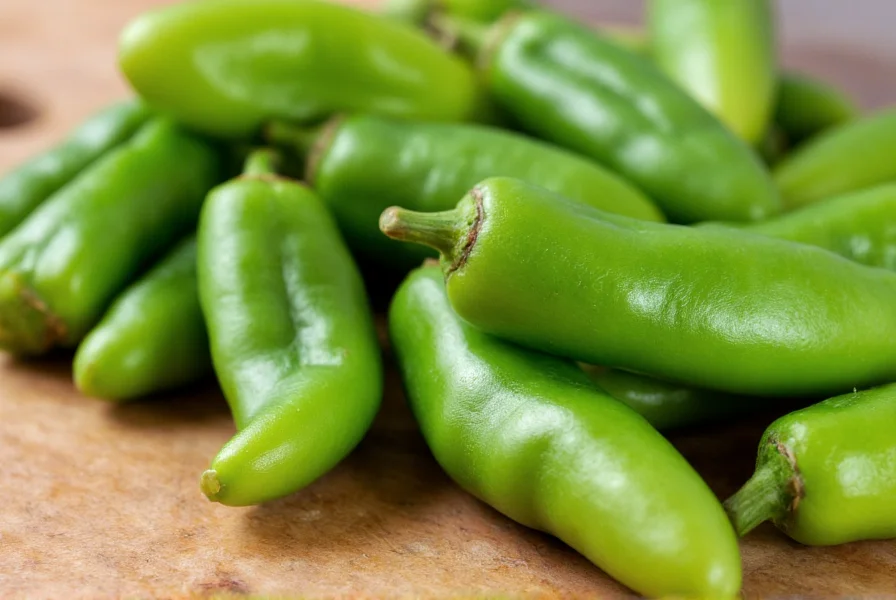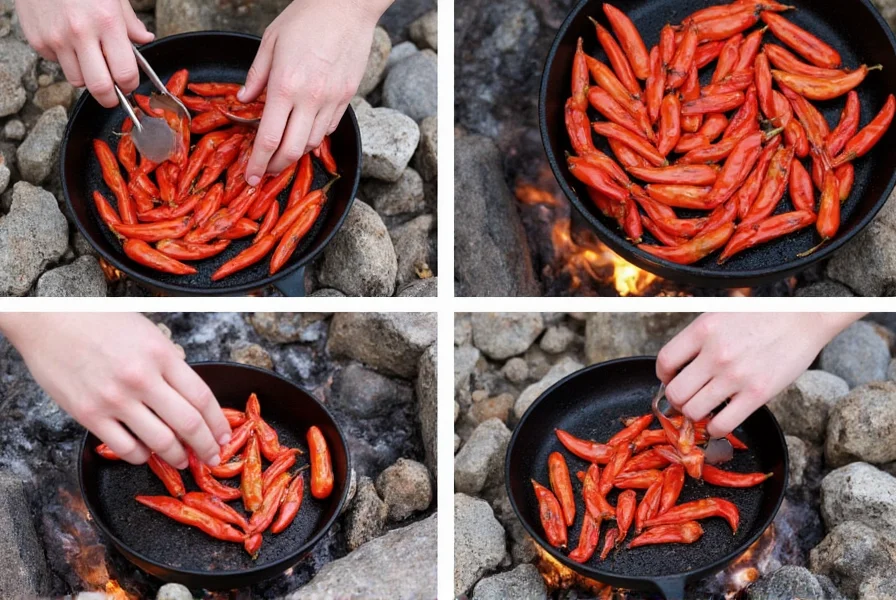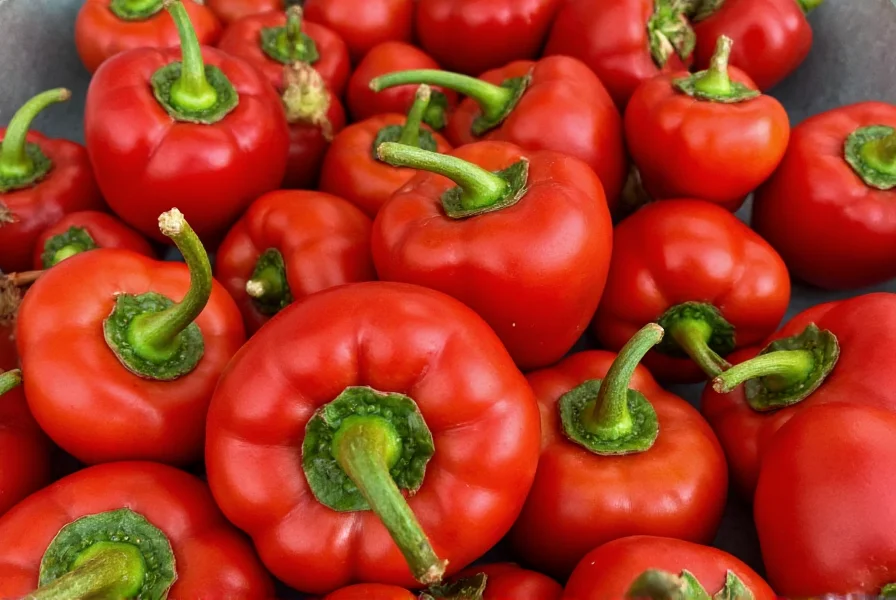Hatch chilies represent one of America's most celebrated regional peppers, cultivated primarily in the Hatch Valley of New Mexico. These green chilies aren't a single variety but rather a collection of New Mexico-style peppers grown in the specific terroir of the Hatch region, which imparts their characteristic flavor profile. The unique combination of high desert climate, mineral-rich soil, and irrigation from the Rio Grande creates conditions that produce chilies with complex flavor notes you won't find in generic "Hatch-style" peppers grown elsewhere.
Understanding Hatch Chili Origins
The term "Hatch chili" refers specifically to chilies grown in the Hatch Valley region of New Mexico, which stretches along the Rio Grande from Arrey to Artesia. This area's unique growing conditions—including 300 days of sunshine annually, significant temperature swings between day and night, and mineral-rich soil—contribute to the distinctive flavor that has made these peppers famous nationwide. While similar varieties are grown elsewhere, only chilies cultivated in this designated region can legally carry the "Hatch" name under New Mexico's certification program.
The history of Hatch chilies traces back to Spanish colonists who brought chili seeds to New Mexico in the 16th century. Local farmers developed these into the varieties we know today, with significant breeding work done at New Mexico State University. The 'New Mexico No. 9' variety, developed in 1913, established the foundation for modern Hatch chilies. Despite common misconception, Hatch isn't a specific chili variety but rather a regional designation for several New Mexico-style peppers grown in this specific agricultural area.
Flavor Profile and Heat Levels
Hatch chilies offer a complex flavor profile that distinguishes them from other green chilies. They typically feature earthy, grassy notes with subtle sweetness and varying degrees of heat. The heat level depends on the specific variety and growing conditions:
| Variety | Scoville Units | Flavor Characteristics |
|---|---|---|
| Mild (e.g., Big Jim) | 1,000-2,500 | Earthy, slightly sweet, minimal heat |
| Medium (e.g., Sandia) | 3,000-5,000 | Grassy notes with moderate heat |
| Hot (e.g., Lumbre) | 6,000-8,000 | Sharp heat with citrus undertones |
Unlike jalapeños which deliver immediate heat, Hatch chilies provide a more gradual warmth that builds slowly, allowing their complex flavors to shine through. This makes them exceptionally versatile in cooking applications where you want chili flavor without overwhelming heat.

Hatch Chili Season and Availability
True Hatch chili season runs from late July through September, when the fresh harvest is available. During this period, you'll find fresh Hatch chilies at farmers' markets, grocery stores, and roadside stands throughout New Mexico and increasingly across the United States. The peak of the season typically occurs in August when the chilies reach optimal maturity and flavor.
Outside of harvest season, frozen and canned Hatch chilies maintain much of their distinctive flavor. Many enthusiasts freeze roasted Hatch chilies in vacuum-sealed bags to enjoy their unique taste year-round. When purchasing out of season, look for products specifically labeled "New Mexico Hatch" rather than generic "Hatch-style" chilies, which may come from other growing regions with different flavor profiles.
Selecting and Storing Hatch Chilies
When selecting fresh Hatch chilies, look for firm peppers with smooth, unblemished skin and a vibrant green color. The best specimens feel heavy for their size and show no signs of soft spots or wrinkles beyond their natural texture. Avoid chilies with blackened areas, which indicate frost damage, or those with excessive softness, which suggests overripeness.
For short-term storage (up to two weeks), keep fresh Hatch chilies in a paper bag in the vegetable crisper of your refrigerator. For longer preservation, roasting and freezing is the preferred method among culinary experts. The roasting process not only enhances flavor but also makes the skins easier to remove, which many recipes require. Simply place chilies directly over a gas flame or under a broiler, turning frequently until the skin blisters and blackens, then seal in a paper bag for 10-15 minutes before peeling.

Culinary Applications for Hatch Chilies
Hatch chilies shine in numerous culinary applications where their distinctive flavor can enhance rather than dominate. The best uses for mild varieties include:
- Green chili stew (New Mexico's state dish)
- Stuffed chilies (like the famous New Mexican "chile relleno")
- Green chili cheeseburgers
- Quesadillas and enchiladas
- Green chili cornbread
Medium and hot varieties work well in salsas, sauces, and dishes where more pronounced heat is desired. One professional chef technique involves blending different heat levels of Hatch chilies to create complex flavor profiles with layered heat. For example, combining mild Big Jim with medium Sandia varieties creates a balanced green chili sauce with depth of flavor and controlled heat.
When substituting Hatch chilies in recipes, consider both flavor and heat characteristics. For mild Hatch varieties, Anaheim peppers offer the closest approximation, while poblano peppers work better for medium-heat applications. Genuine Hatch flavor, however, remains distinctive and difficult to perfectly replicate with substitutes.
Hatch Chili Myths and Misconceptions
Several common misconceptions surround Hatch chilies. First, not all green chilies labeled "Hatch" actually come from the Hatch Valley—many are grown in other regions but marketed using the famous name. Second, Hatch chilies aren't inherently hotter than other varieties; their heat varies significantly by specific cultivar. Third, the belief that all Hatch chilies must be roasted is incorrect—fresh, unroasted Hatch chilies work beautifully in salads and fresh salsas.
Understanding these distinctions helps consumers make informed choices when seeking authentic Hatch chili experiences. The New Mexico Department of Agriculture maintains a certification program for genuine Hatch Valley chilies, though enforcement remains challenging in national markets.
What's the difference between Hatch green chilies and Anaheim peppers?
While often confused, Hatch green chilies and Anaheim peppers differ in origin and flavor. Hatch chilies come specifically from New Mexico's Hatch Valley and have a more complex, earthy flavor with subtle sweetness. Anaheim peppers, originally from California, tend to be milder and more one-dimensional in flavor. Hatch chilies also typically have thicker walls and more pronounced ridges than Anaheims.
When is the best time to buy fresh Hatch chilies?
The authentic Hatch chili season runs from late July through September, with peak availability in August. During this period, fresh Hatch chilies appear at farmers' markets and grocery stores nationwide. Outside this window, frozen or canned products labeled specifically as "New Mexico Hatch" offer the most authentic flavor experience.
How hot are Hatch green chilies compared to other common peppers?
Hatch green chilies range from mild (1,000-2,500 Scoville units) to hot (6,000-8,000 Scoville units) depending on variety. Mild Hatch varieties are comparable to poblanos, medium varieties approach jalapeño heat, while hot varieties approach serrano levels. Unlike jalapeños which deliver immediate heat, Hatch chilies provide a more gradual warmth that allows their complex flavors to shine through.
What's the best way to freeze Hatch chilies for year-round use?
The optimal method involves roasting, peeling, and freezing Hatch chilies in vacuum-sealed bags. First roast over an open flame until blistered, place in a paper bag for 10 minutes, then peel and remove seeds. Pat dry, portion into recipe-sized amounts, and vacuum-seal before freezing. This preserves flavor and texture better than freezing raw chilies or using regular freezer bags.
Can I grow authentic Hatch chilies outside of New Mexico?
While you can grow Hatch chili varieties outside New Mexico, the distinctive flavor comes from the specific terroir of the Hatch Valley. Plants grown elsewhere may look similar but lack the characteristic earthy-sweet flavor profile. The combination of high desert climate, mineral-rich soil, and Rio Grande irrigation creates conditions that cannot be perfectly replicated elsewhere, making true Hatch flavor unique to its region of origin.











 浙公网安备
33010002000092号
浙公网安备
33010002000092号 浙B2-20120091-4
浙B2-20120091-4